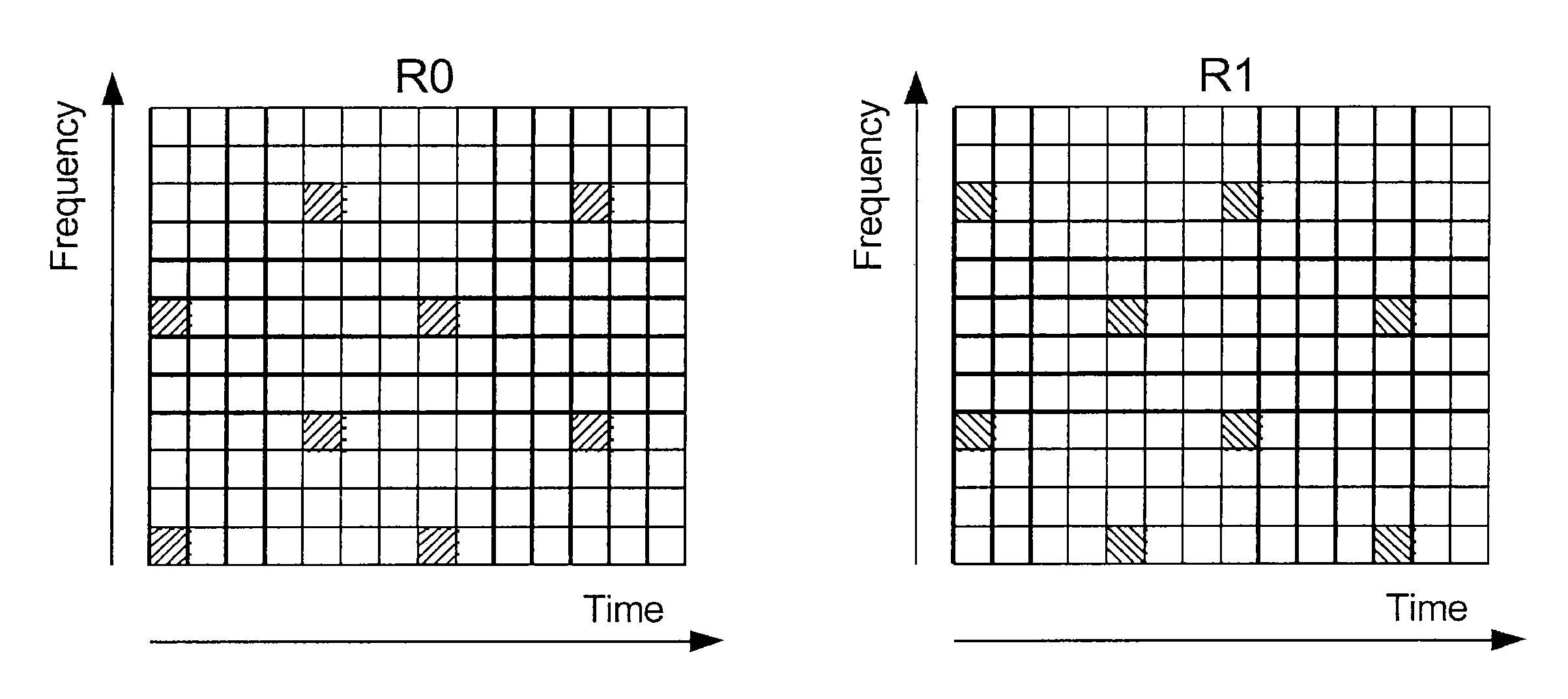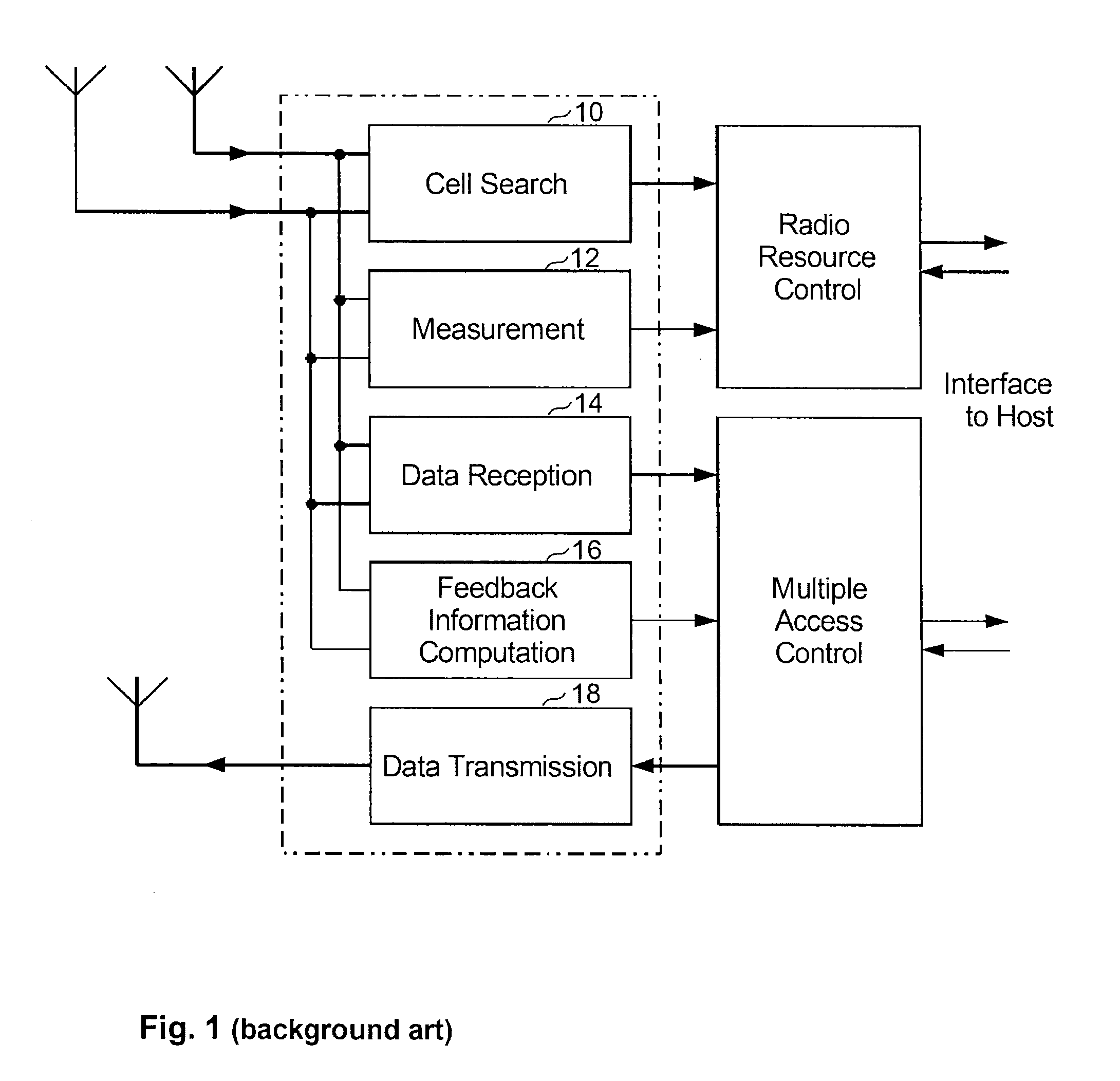Method and arrangement for asynchronous rsrp measurement in an LTE ue receiver
a technology of asynchronous rsrp and lte ue receiver, which is applied in the direction of line-transmission details, orthogonal multiplex, transmission monitoring, etc., can solve the problems of one third of ofdm subcarriers, the data reception path cannot be freed, and the processing complexity is reduced, so as to reduce the duration of fft and the effect of reducing processing complexity
- Summary
- Abstract
- Description
- Claims
- Application Information
AI Technical Summary
Benefits of technology
Problems solved by technology
Method used
Image
Examples
Embodiment Construction
[0032]FIG. 3 is a flow chart of general RSRP measurement functionality for one receive antenna. Time samples are extracted from the received signal, at 20, which comprises e.g. removal of a guard interval. At 22, an FFT is performed, for transformation from time into frequency domain. Reference symbols are extracted and demodulated, at 24 and 26, respectively, from the frequency domain signal, and a 2 dimensional filter function is applied to the demodulated reference symbols. Briefly stated, a set of channel estimates is computed across the frequency band, by blocks 20-28, and at 30, the results are squared and summed in order to obtain a single RSRP value.
[0033]When considering the 20 MHz bandwidth case (see ETSI TS 136 101 V8.10.0, section 5.6), the receiver would typically extract 2048 time samples for each OFDM symbol, at block 20, and would use an FFT with a length of 2048, at 22.
[0034]As mentioned above, reference symbols are equidistantly spaced in frequency direction, with ...
PUM
 Login to View More
Login to View More Abstract
Description
Claims
Application Information
 Login to View More
Login to View More - R&D
- Intellectual Property
- Life Sciences
- Materials
- Tech Scout
- Unparalleled Data Quality
- Higher Quality Content
- 60% Fewer Hallucinations
Browse by: Latest US Patents, China's latest patents, Technical Efficacy Thesaurus, Application Domain, Technology Topic, Popular Technical Reports.
© 2025 PatSnap. All rights reserved.Legal|Privacy policy|Modern Slavery Act Transparency Statement|Sitemap|About US| Contact US: help@patsnap.com



